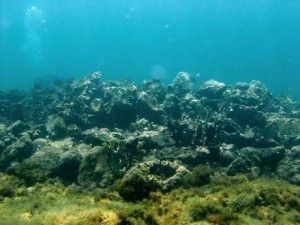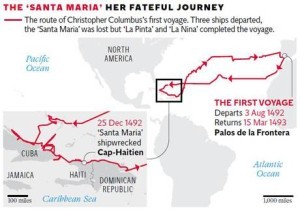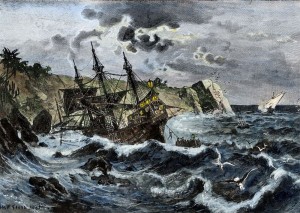Archaeologists believe they have found in the Caribbean the wreck of “Santa Maria” Christopher Columbus’ lost ship.
The researchers found the wreck on the north coast of Haiti. If the identity of the ship is confirmed, it will be one of the most important marine archaeological discoveries.
According to an article in the British newspaper Independent, citing the statements of one of the researches, Barry Clifford, all geographical and archaeological evidence shows that this is indeed the ship of Christopher Columbus.
The personal diary of Columbus contains references to the ship and the location of the wreck fits perfectly with the historical knowledge available, the underwater topography and the information we have about “Santa Maria”.

Using marine magnetometers, side-scan sonar equipment and divers, Mr. Clifford’s team has, over several years, investigated the general area of the north coast of Haiti and has narrowed the search down to the tiny area where the wreck has been found.
So far, Mr Clifford’s team has carried out purely non-invasive survey work at the site – measuring and photographing it.
Now the aim is to lift any surviving remains of the vessel and put them in a museum in Haiti.

The Santa Maria was built in the second half of the 15 century in northern Spain’s Basque Country. In 1492, Columbus hired the ship and sailed in it from southern Spain’s Atlantic coast via the Canary Islands in search of a new western route to Asia.
After 37 days, Columbus reached the Bahamas. However, just over ten weeks later, his flagship, the Santa Maria, with Columbus on board, drifted at night onto a reef and sunk. Columbus and his men had to abandon the ship.
In a native village nearby, Columbus began building his first fort. A week later, leaving many of his men behind in the fort, he used his two remaining vessels to sail back to Spain.
Ask me anything
Explore related questions






